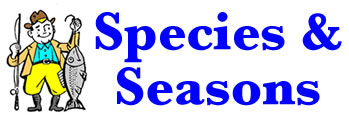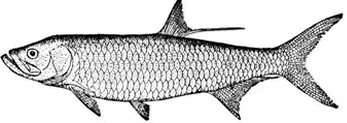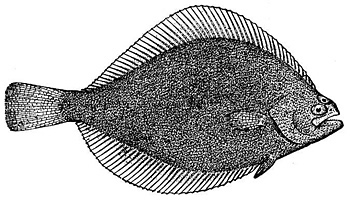

Spring
Early spring: grouper and snapper are close to shore (5-20 miles) and kingfish,
cobia, tuna and mackerel are starting their migration north. Speckled sea
trout and redfish begin feeding on top of the flats. As the water begins to
warm snook start to venture into the bay from canals and creeks where the
water has been warmer over the winter months.
Late Spring: tarpon begin their migration north and are caught within 100
yards off the beautiful Sarasota beaches as well as in the bay and passes.
This is the premier fishing time as most fish are waking up and putting on
the pounds. The wind is primarily from the east which makes the gulf waters
smooth and very clear.

Summer
This is the early morning and late evening bite as offshore grouper
and snapper move out to 20-40 miles off shore, and the barracuda and amberjack(donkeys)
gather around the wrecks and artificial reefs. Many a fisherman experience
sore arms and shoulders reeling in Goliath grouper, Amberjack , Barracuda,
Gag Grouper and Red Snapper. This is a time for frequent applications of sunscreen
to prevent sunburn.
Inshore, in the early morning, trout are striking top water lures. Snook are
being caught off the beaches, in the passes and around the dock lights at
night. Afternoon thunder storms and sea breezes are common during this time
of year.

Fall
Expect the same action as spring but the fish are heading south.
Pompano and flounder are in the passes and triple tail are on the crab buoys
offshore .

Winter
Grouper and snapper are in close to shore (5-10 miles) while most of the offshore
migratory species are south of us. This is a great time to troll for grouper
in 25-50 feet of water. Inshore the trout are laying in potholes in the grass
flats and in deep water just off the flats. Redfish are digging for crabs
around docks and oyster bars while lady fish and jacks move into the bays
to provide nonstop action on artificial lures and flies.

Sarasota
Sarasota has a large open bay and three passes as well as a long Intercoastal
Waterway extending south to Venice so there is always protected waterways
to fish. Offshore fishing, especially in the fall and winter months, can be
interrupted by cold fronts from the north. These usually last 2-3 days and
blow 15-20 miles per hour out of the northwest.
Typically the inshore trip starts with “making bait " - cast netting white bait. Even if you are fly fishing chumming with bait can greatly increase you luck for snook and reds. In the heat of the summer casting top water lures before sunrise provides hot action for trout, redfish and snook.